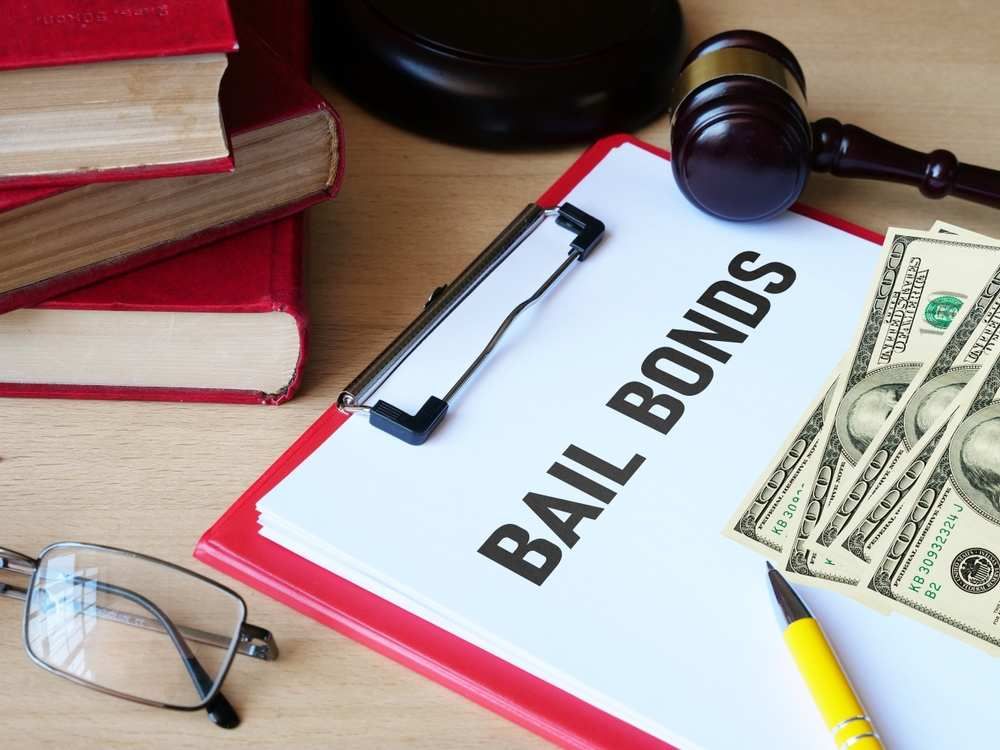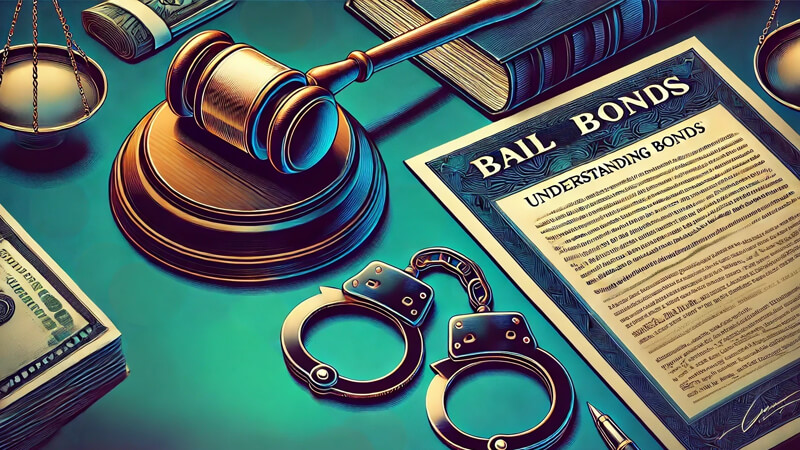The Secret to Successful Bail Bonds: Trust and Openness
The Secret to Successful Bail Bonds: Trust and Openness
Blog Article
Understanding the Basics of Bail Bonds: What You Required to Know
Browsing the complexities of bail bonds is a crucial aspect of the legal system that can dramatically impact the accused's journey through court procedures. The details of exactly how bail bonds run, the various kinds readily available, and the important considerations in picking a credible bail bondsman can be discouraging.
What Is Bail?
Bail is a monetary plan that enables a private accused of a criminal offense to be released from safekeeping while awaiting trial. The main function of bail is to make certain that the defendant stands for future court proceedings (Los Angeles Bail Bondsman). Normally set by a court, the bail amount differs relying on the nature of the criminal activity, the offender's criminal background, flight threat, and other significant aspects
When bail is given, the implicated or a rep must pay a specified sum, which might remain in cash or via a bail bond. Sometimes, bail can be refuted altogether, particularly for significant offenses or if the suspect poses a considerable danger to public safety and security. The principle of bail is rooted in the assumption of virtue, enhancing the concept that people must not be penalized prior to a sentence.

Comprehending Bail Bonds
A bail bond is a financial tool that promotes the launch of an implicated person from custody, serving as an assurance for their appearance at future court days. This plan allows accuseds to preserve their flexibility while awaiting trial, reducing the burdens connected with imprisonment. The bail bond procedure commonly entails a third-party business, called a bond bondsman, that supplies the needed funds to the court in behalf of the accused.
Bail bonds can be found in different types, including guaranty bonds, property bonds, and cash money bonds, each with unique requirements and implications. Guaranty bonds, the most common kind, need a premium settlement, normally a portion of the total bail amount, which is non-refundable. On the other hand, a building bond includes using actual estate as collateral, while cash bonds demand the full bail amount to be paid ahead of time.
Comprehending the nuances of bail bonds is essential for offenders and their households. It is vital to realize the prospective economic ramifications, consisting of charges and commitments to the bail bondsmansman, along with the legal duties tied to guaranteeing court appearances. Expertise of these aspects help in making informed decisions throughout a challenging time.
Exactly How Bail Bonds Work
The process of protecting a bail bond commonly involves several crucial actions that make certain the accused can regain their flexibility while waiting for test. The individual or their representative contacts a bail bondsman, who assesses the case and the associated risks. The bondsman will require information about the accused, including the charges, the bail quantity established by the court, and any kind of pertinent individual information.
When the bondsman agrees to offer the bond, the accused or their representative must pay a non-refundable fee, generally a percent of the complete bail amount. This fee compensates the bondsman for taking on the economic threat of making certain the charged appears in court. Sometimes, collateral might additionally be needed, such as residential property or useful possessions, which works as security for the bond.
After any security and the charge are arranged, the bail bondsman submits the required documentation to the court. Upon authorization, the bail is uploaded, and the implicated is released from custody. It is essential for the charged to stick to all court days and conditions, as failing to do so can result in the forfeiture of the bond and possible legal effects.
Types of Bail Bonds
Numerous kinds of bail bonds are readily available to fit different conditions and requirements. One of the most typical kind is the surety bond, where a bond bondsman assurances payment of the complete bail amount to the court for a non-refundable fee, typically around 10% of the bail. This setup enables offenders to protect their launch without paying the entire bail upfront.
Another kind is the cash money bond, which needs the offender or a co-signer to pay the complete bail amount in cash money directly to the court - Bail Bondsman. This alternative is typically favored for lower bail quantities, as it ensures the cash is returned upon the offender's appearance in any way court process
Home bonds entail the use of genuine estate as security. In this instance, the court places a lien on the residential property, which can be waived if the defendant stops working to show up.
Last but not least, federal bail bonds are particularly created for government cases, frequently including greater quantities and added complexities. Understanding these different bail bond types is vital for offenders and their families in making informed decisions during a challenging time.
Selecting a Bail Bondsman
When choosing a bail bondsman, it is necessary to take into consideration numerous key factors that can impact the total experience and end result. Assess the bail bondsman's online reputation by looking into on the internet reviews and getting recommendations from relied on resources. A reputable bail bondsmansman will have a history of expertise and successful situations.

It is additionally critical to recognize the charge structure. Most bail bondsmensman bill a non-refundable fee, generally around 10% of the bail quantity. Watch out for any weblink type of hidden fees or uncommon repayment methods. Transparency in rates is a trademark of a credible bondsman.
Conclusion
In summary, comprehending the principles of bail bonds is crucial for individuals included in the legal system. Bail acts as an economic assurance of court look, while various sorts of bail bonds deal Continued with different scenarios. Understanding the functional mechanisms of bail bonds and selecting a credible bail bondsmansman can dramatically influence great post to read the total experience. A comprehensive analysis of offered alternatives guarantees educated decision-making, inevitably facilitating a smoother navigating with the intricacies of the legal process.
The details of just how bail bonds operate, the various types offered, and the critical considerations in choosing a trustworthy bail bondsman can be daunting. The bail bond process generally includes a third-party business, recognized as a bail bondsman, that provides the required funds to the court on behalf of the implicated.
The most typical kind is the guaranty bond, where a bail bondsman assurances repayment of the complete bail amount to the court in exchange for a non-refundable charge, normally around 10% of the bail. Bail serves as a monetary assurance of court appearance, while various types of bail bonds provide to various conditions. Recognizing the functional devices of bail bonds and choosing a credible bail bondsman can substantially influence the general experience.
Report this page